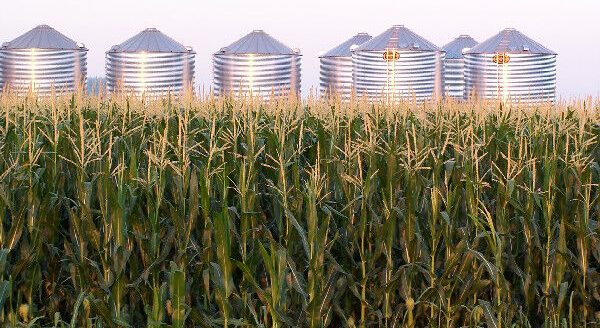Canola got a shot in the arm with the recent announcement of Scoular’s plan to recommission its crush facility near Goodland, Kansas, and an agronomist says to take note of the company’s investment.
Scoular accepted canola for crushing in 2024, and a company official says it is part of a long-term plan to secure 400,000 acres to reliably provide grain to the facility with a major push in 2025.
The news about Scoular recommissioning the crush facility in Goodland breathed new life into the winter canola industry in the Great Plains, said Michael Stamm, canola breeder at Kansas State University, who provided the photo above.
“Without a regional market, it is a challenge to grow a crop like winter canola,” Stamm said. “The long-term investment that Scoular is making will drive the growth of canola acres now and into the future.”
For farmers who are not familiar with growing canola, his advice is for them to do their homework. Most farmers are familiar with wheat production practices, and although winter canola has similarities, there are several key differences, he said.
One example is seeding rates for canola are in the 3 to 4 pounds per acre range, which is much different from winter wheat.
“Often we recommend 100 to 120 pounds per acre of nitrogen and around 30 pounds per acre of sulfur,” Stamm said. “Because of its small seed size, canola can be seeded to a 1-inch depth at most. Establishment is critical, and we want to see canola emerge right out of the soil.”
The crop must attain a target of top growth, roughly six to 12 true leaves, before winter sets in, he said. Stamm encourages growers to reach out to K-State Extension personnel, consult an experienced grower or read the Great Plains Canola Production Handbook for tips. For Kansas growers, the handbook is at https://bookstore.ksre.ksu.edu/pubs/great-plains-canola-production-handbook_MF2734.pdf.

Benefits from canola
Stamm said there is inherent benefit to rotating grass crops with broadleaf crops.
“In our research, we have seen roughly a 10 to 20% increase in wheat yields the first year following winter canola,” he said.
Oklahoma State University research has shown similar results, plus a significant reduction in the weed bank in the subsequent wheat crop. OSU’s research also showed an increase in wheat tillers and forage dry matter following canola.
“In addition to following canola with wheat, we know that canola crop residue provides an ideal seedbed to double crop sorghum or soybeans afterward,” Stamm said.
Equipment needs
A wheat producer is likely to have most of the equipment he needs to plant canola, although he will need to make adjustments to his air seeder or precision planter to meter the seeding rate, Stamm said. Some older drills may require a half-speed sprocket to slow metering, or the producer can plug every other row, if narrow rows are used, and the seeding rate is too high.
Some producers have used a bulking agent mixed with seed to accurately plant small-seeded crops such as canola, he added.
Swathing, then picking up canola is still a popular way to harvest, Stamm said. Other farmers will desiccate the crop with an herbicide and then use a draper header that has a cross auger installed to direct harvest. That practice is common in many canola-growing regions.
A good stand essential
Most canola in the southern Plains has been grown in Kansas and northern Oklahoma. Stamm said winter canola has the potential to be a successful crop in northern Kansas, but growers need to understand risks.
“The most important step is getting a good stand in the fall so that the crop has enough top growth to adequately overwinter,” he said. “In order to do that, soil moisture availability is critical. Canola is not a crop that we can plant in early September and then hope it emerges in October.”
Growers should watch and monitor multi-week forecasts and closely keep tabs on soil moisture availability, he said.
“When growing the crop in an area with increased risks, one needs to be very cognizant of the steps being taken to ensure the best outcome,” Stamm said. “In terms of yield potential, we can envision canola yields being 80 to 85% of our typical wheat expectations.”
There are good varieties that work across the region, he said. His recommendation is to study the results from the National Winter Canola Variety Trial or reach out to K-State for questions about specific varieties. He encouraged growers to review data across multiple years and environments, particularly if their farm is at a distance from a specific testing site.
“If winter hardiness is a concern, look at varieties that have rankings in the top third for winter survival,” he said.
Stamm said because of the size of today’s operations and the opportunity costs that are part of every decision, his advice to growers is to consult with someone who knows canola production well.
“Have a plan in place for how you will harvest and market the grain,” Stamm said. “Spend time learning about the crop, and routinely scout your fields throughout the growing season.”
Dave Bergmeier can be reached at 620-227-1822 or [email protected].




